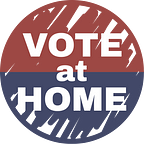Mid-Session Update: Most mail voting bills aren’t bad. Be alert, not anxious.
If you follow the news on voting access, the past few months can feel depressing. If you love the security and accessibility of mail voting, the outlook is not nearly as bad as it might seem. While it is true that bills have been introduced to cut back on access to mail voting (more than last year certainly), less than 15% of voting reform bills introduced do so. In fact, for every bill introduced to cut off access to mail voting, three bills that expand mail voting were introduced.
The pandemic created many operational and logistical challenges for states to run their elections. In 2020, states responded to these challenges by expanding access to mail voting through a variety of means laid out in our strategic scale plan, including many states that temporarily lifted burdensome excuse requirements. It is fortunate that they did: not only did these states provide more options to vote safely, they saw registered voter turnout rise by more than 9.5%.1 We know that when voters have more secure and accessible options, they want to keep those options: nearly ¾ of voters support no-excuse voting. Subsequently, those states that offered more access to mail ballots have both the highest average number of pro-voter, pro-mail voting bills introduced.2 Many of the pro-mail-voting bills introduced in these states seek to keep the changes made last year.
States with 5-star vote at home systems were resilient amidst the pandemic and are not looking to change now. On average, these states have the fewest number of voting reform bills, as well as the lowest average number of anti-mail voting bills introduced. Keep in mind, these states are both red and blue. Utah, a conservative state with Republican control of both legislative chambers and the Governor, is a prominent 5-star vote at home state and is not considering dismantling their system.
That is not to say there is no reason for concern. Certainly, we have a great deal of concern about states like Georgia, Arizona, Iowa, Florida, Montana among others, and the attempts to restrict access to mail ballots, but it is important to look at the larger picture, where election reform has come to the forefront of the conversation both nationally and locally. While partisan divides still exist, the narrative around reform should also include the fact that there is a vast pool of legislation in process and not all of it restricts access to mail ballots, in fact, we argue the opposite.
Ultimately, any policy that restricts voters’ access to secure voting options is a cause for concern, but as states consider what is best for their constituents, it is important to see the forest for the trees. When anti-mail ballot legislation is given an outsized platform, the trust voters have in that system is eroded. We celebrate the fact that more than 185 million Americans had the opportunity to vote by mail last year and 28.5 million of them chose to do so for the very first time. The sheer volume of pro-voter bills means that states are broadly headed in the right direction, and we remain committed to helping them get thereby providing support to both legislators and election officials to pass and implement good policy.
Sources:
1. Footnote 1: Temporarily lifted excuse requirements include all states that offered all voters to select COVID as an acceptable excuse or temporarily created a new type of mail which voters did not need an excuse to use, such as DE, MA, & MO. Turnout is measured by total votes divided by the number of registered voters, rise is calculated by dividing 2020 turnout by 2016 turnout. 2020 data retrieved from official state results, 2016 data from EAVS
3. Number of registered voters as of 11/3/20 that lived in a state where anyone could get a mail ballot
4. Extrapolated based on PEW data
159,255,945 (total ballots cast in 2020 general from official results) * 0.46 (percent that voted by mail from PEW) * 0.39 (percent of mail voters that were first-timers from PEW) = 28,570,516
PEW’s suggested citation: Pew Research Center, November 2020, “Sharp Divisions on Vote Counts, as Biden Gets High Marks for His Post-Election Conduct”
